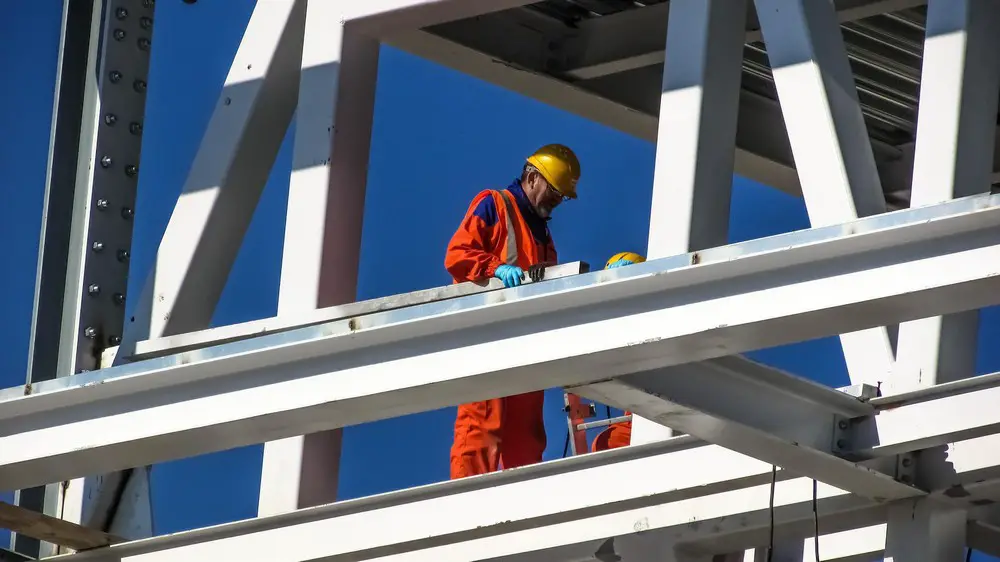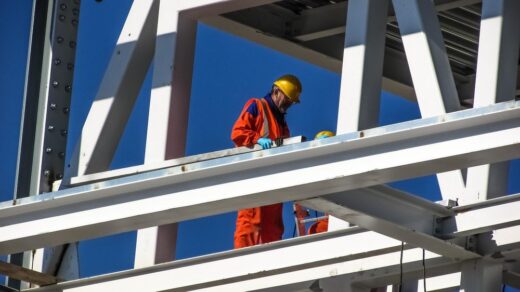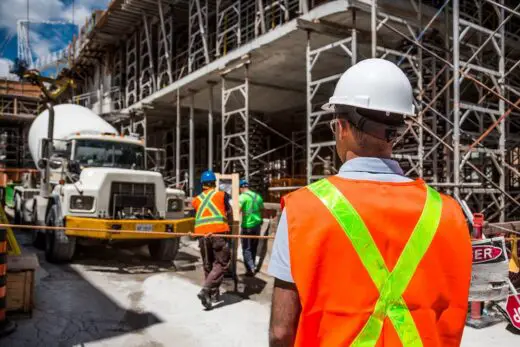Keeping construction workers safe: 6 Steps to a safe building site, Builder H&S Tips, Online property advice
6 Steps to a Safe Construction Site
29 April 2022
Construction site managers/general contractors are the ones who are held responsible when one of their workers gets injured on the job. It’s their job to make sure that all of the construction workers are properly trained and that the construction site is kept safe.
However, when treated as a team effort, construction sites can become much safer and have fewer incidents of injured workers and even construction-related deaths.
Here are six steps for both construction managers and construction workers to take to ensure a safe construction site.
#1: Create a Safety Plan Specific to Each Project
Not every day is the same in the construction industry, and neither is every construction site. Therefore, the first thing that should be done is to create a safety plan that is unique to that specific site.
Each site should be thoroughly evaluated to determine what hazards are already present and any potential hazards that may exist to prevent or at least decrease the risk of injury or death. Next, the entire project needs to be broken down into individual tasks with the risks assessed for each task and the equipment needed to complete these tasks.
#2: Inspect Each Construction Site Frequently
Construction sites need to be inspected frequently— not just at the beginning of the project. The entire site (including all machines and equipment) should be inspected before work begins and after work ends to ensure that everything is working properly. Site inspections also help to make sure that the site is free of clutter and debris that could become tripping hazards, as slips, trips, and falls make up the most injuries on a construction site. Consider installing Fall Safety Netting to prevent any serious injuries when working up high.
#3: Establish a Safety Culture Among Workers
Although responsibility falls on the project manager, safety is truly the responsibility of everyone working on the project. Teamwork on construction sites is the best way to ensure that not only the work gets done efficiently and correctly, but also everyone stays safe during the duration of the project. For this reason, it’s a good idea to create a safety committee made up of workers from all areas and levels— from executive all the way down to labor. This way, it’s made clear that everyone is responsible for the safety of construction workers.
#4: Make Sure All Workers are Properly Trained
Construction work is not something to be taken lightly, as it’s considered one of the most dangerous jobs in the world. According to Procore, more than 1,000 construction workers died on the job in 2019, so it’s important that construction workers are properly trained as a way to help mitigate injuries and death.
While training new hires, it’s a good idea to have current workers complete training sessions as well. We all tend to get complacent when we’ve been working at a job for some time, so it’s recommended that veteran workers receive ongoing training as well.
#5: Hold Safety Meetings Often
Part of this ongoing safety training for everyone can be holding staff safety meetings every morning before work begins— in addition to daily inspections of the construction site. It’s also a good idea to have each worker inspect their PPE (personal protective equipment) and machinery before the day begins. All hazards (potential and apparent) of the day’s work should be discussed during these safety meetings, as well as a review over any accidents that may have occurred the day before.
#6: Encourage Other Workers to Speak Up
Everyone on the construction site, no matter their status, should be able to speak up if they witness any unsafe working conditions. This is why a safety committee made up of people of various levels can be helpful. Safety management shouldn’t be left solely to those who don’t actually engage in construction work. Everyone involved must understand that there is equal responsibility when it comes to their safety and the safety of others.
Another part of speaking up includes speaking up about the lack of safety plans, safety culture, and other measures that can prevent accidents. Injured construction workers have legal rights when it comes to workers’ compensation benefits. For more information, visit Rosenfeld Injury Lawyers.
Follow and consistently implement these six steps, and you’ll have a safer construction site in no time! Construction workers shouldn’t have to worry if everyone involved in a project takes their safety seriously— everyone’s safety should always be taken seriously at all times. Construction workers have a right to a safe work environment, just like everyone else.
Comments on this Guide to Keeping Construction Workers Safe: 6 Steps to a Safe Construction Site article are welcome.
Construction
Construction Safety Posts
Why Construction Safety Is Important
Best practices to improve construction site safety
Safety rules and responsibilities for construction sites
Warehouse renovations: 6 tips for more efficient services

Building Design
Architecture
Comments / photos for the Keeping Construction Workers Safe: 6 Steps to a Safe Construction Site page welcome







